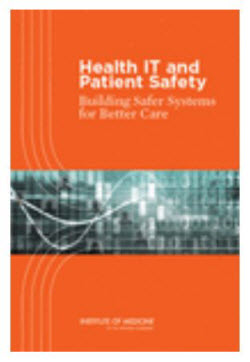Technology-induced medical errors: the wave of the future?

Electronic healthcare management is a really fascinating, promising topic, and most of the time, you hear people focusing on the improvements in patient care, as well as cost and time savings, partly because it helps make a case to get healthcare organizations on board with change.

Considering the chilling effects of change is sometimes frowned upon in a culture in love with positive thinking, and in need of reinvention and transformation. Often, people who point out the fly in the ointment are reviled because of their buzz-killing interference with irrational exuberance.
Tuesday's federal report by the National Institute of Medicine, "Health IT and Patient Safety: Building Safer Systems for Better Care," addresses the strong need for safety in health IT without irresponsibly discouraging progress.
One of the more interesting recommendations in the report is to create a new oversight agency modeled after the NTSB (National Transportation Safety Board), that could investigate medical IT errors in the same spirit as aircraft crashes are investigated. Whether the federal government needs yet another agency is certainly up for debate. The flip side of the question is, of course, whether the responsibility should be added to the already-beleaguered FDA, although it seems clear from things like the Zyprexa debacle of a few years ago that they're pretty maxed out as it is.
The full text of the National Academies Press pre-publication e-book, "Health IT and Patient Safety" is available if you want to read it. It's definitely work a look. I'll be reading the full report over the next few days, and I'm sure it'll provide thought-provoking material for future blog posts, so stay tuned.
What are your biggest concerns about safety with electronic health records? Any suggestions for mitigation? After all, you're the IT experts. Share in the TalkBacks below.